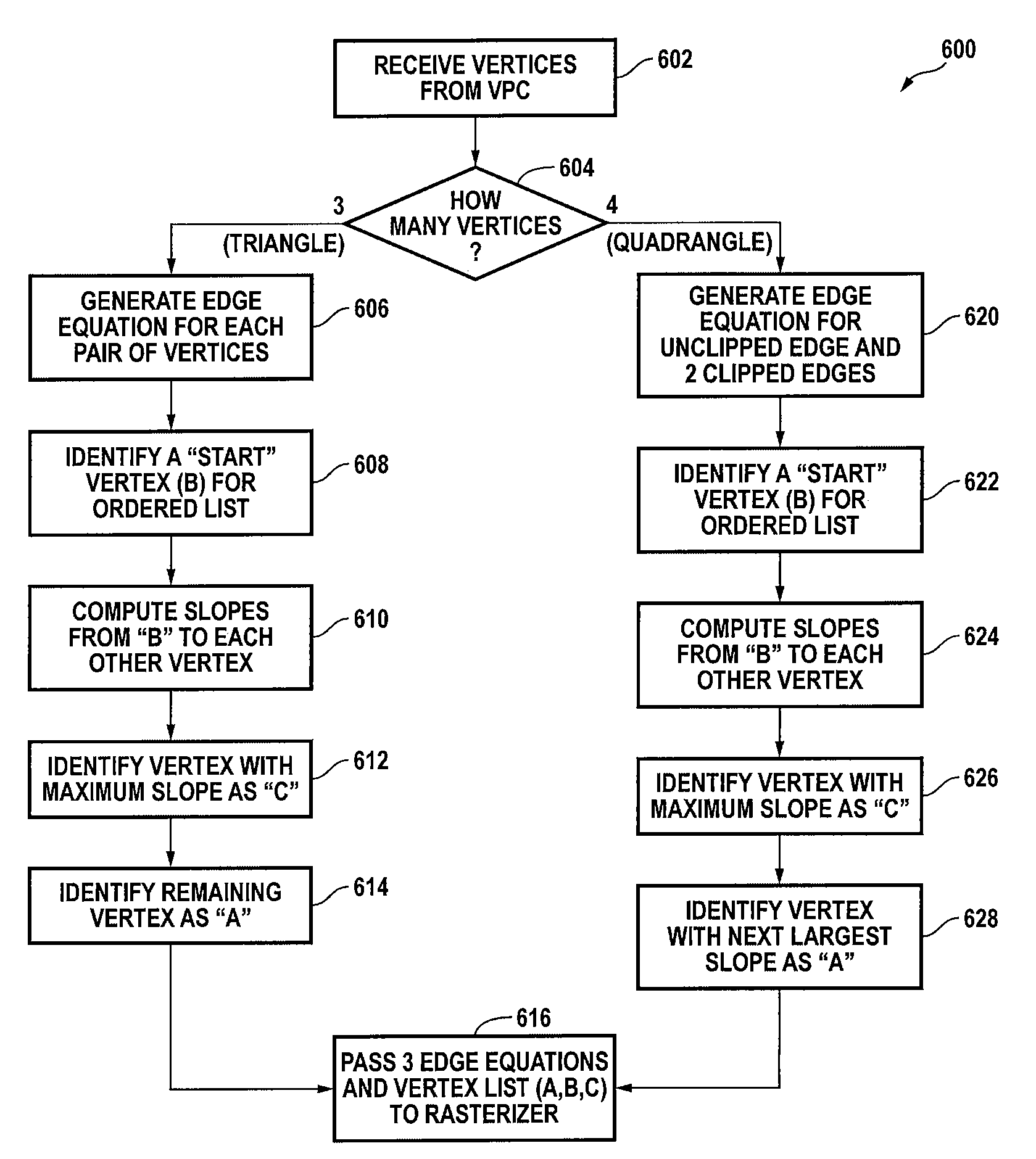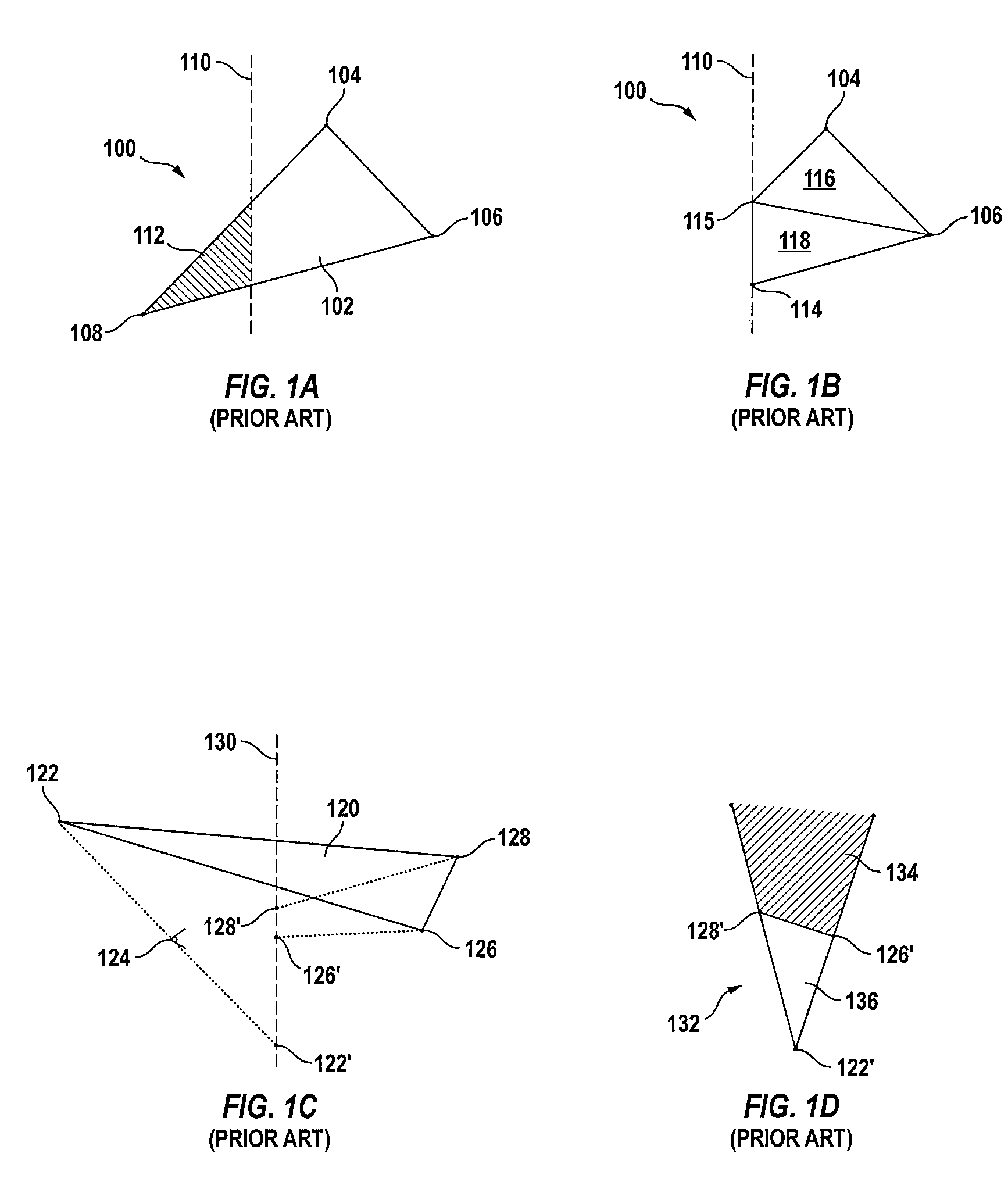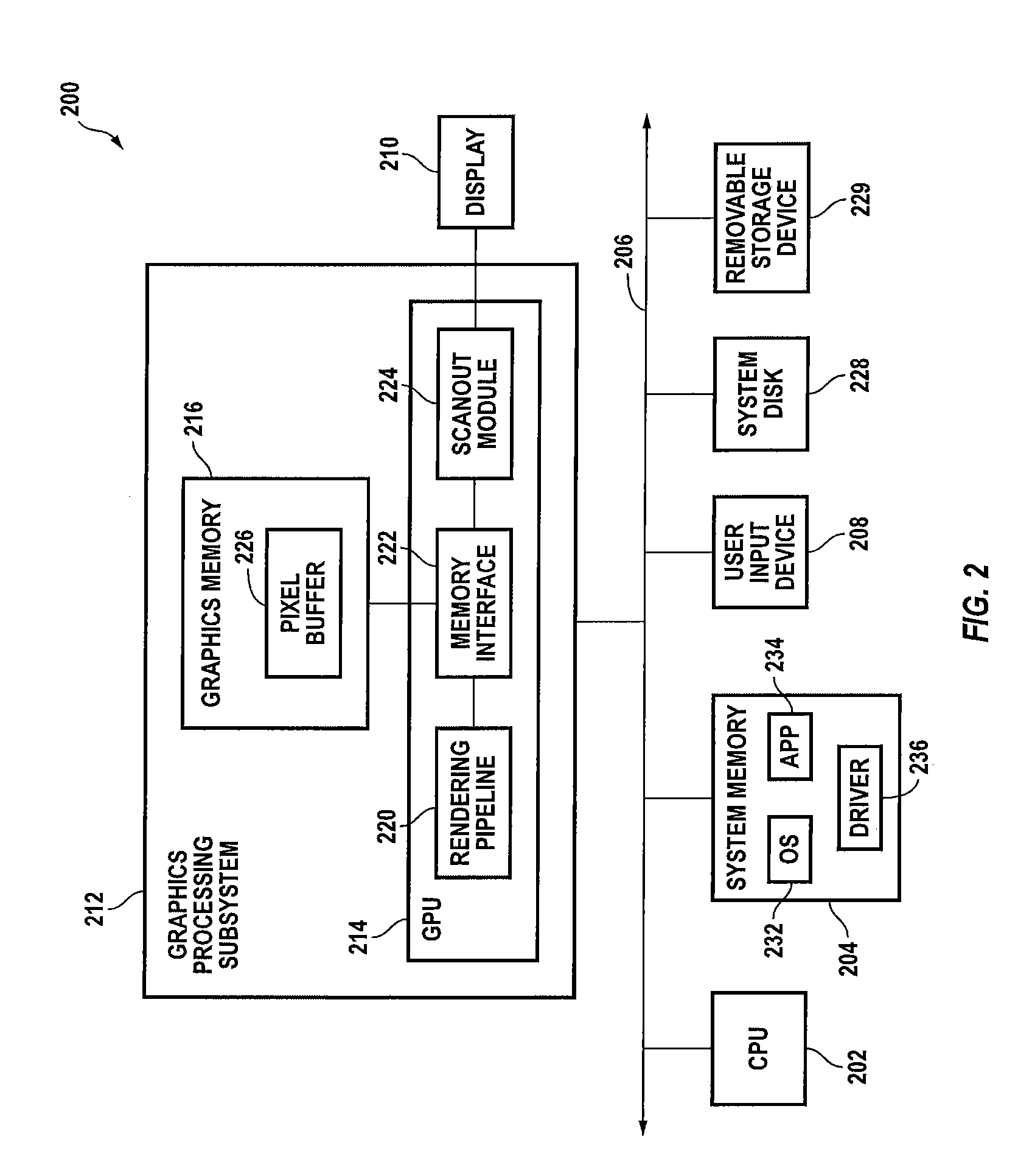Clipping with addition of vertices to existing primitives
- Summary
- Abstract
- Description
- Claims
- Application Information
AI Technical Summary
Benefits of technology
Problems solved by technology
Method used
Image
Examples
Embodiment Construction
[0032]Embodiments of the present invention provide clipping techniques that introduce additional vertices into existing primitives without requiring creation of new primitives. For example, a triangle may be clipped to a near plane or other clipping surface defined such that points on one side of the surface are (at least potentially) visible and points on the other side are invisible. If the triangle has one invisible vertex (i.e., one vertex to the “invisible” side of the clipping surface), a four-vertex clipped triangle (referred to herein as a quadrangle) results. The extra vertex can be hidden from the rasterizing and shading stages by suitable selection of three edge equations for use in rasterization and three vertices for attribute computation during shading. For example, in the case of a quadrangle, three edges can be selected that will result in correct coverage determinations during rasterization (the fourth edge can be provided by the clipping surface itself), and any th...
PUM
 Login to View More
Login to View More Abstract
Description
Claims
Application Information
 Login to View More
Login to View More - R&D
- Intellectual Property
- Life Sciences
- Materials
- Tech Scout
- Unparalleled Data Quality
- Higher Quality Content
- 60% Fewer Hallucinations
Browse by: Latest US Patents, China's latest patents, Technical Efficacy Thesaurus, Application Domain, Technology Topic, Popular Technical Reports.
© 2025 PatSnap. All rights reserved.Legal|Privacy policy|Modern Slavery Act Transparency Statement|Sitemap|About US| Contact US: help@patsnap.com



